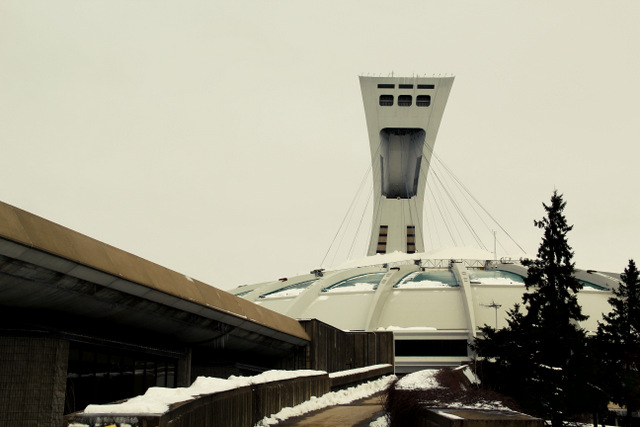
The 1976 Summer Olympics were held in the francophone metropolis of Canada. In the first installment of this series about Montreal’s quirky buildings, we covered the installations that were built for the 1967 World Fair and that remain standing today. Expo 67 is not the only major international event that has taken place in Montreal.
Mayor Jean Drapeau, responsible for the modernization of the city and also in power in 1967, wanted to make Montreal a part of the very select list of cultural capitals. As other Canadian cities like Toronto or Vancouver where becoming economic capitals, Drapeau said: ‘Let Toronto become Milan, Montreal will always be Rome’. This is why he chose to make Montreal a city of big events such as the Olympics.
After a few failed attempts, Montreal was officially chosen over Moscow and Los Angeles on May 12th 1970 for the Summer Olympics of 1976. Over the next six years, preparations were under way in order to be able to host the numerous sporting events and the thousands of people who would be flowing into the city for the two weeks of competitions.
Olympics often push countries to build impressive, audacious buildings (see London, Turin, Tokyo, Beijing). This common practice is often attributed to the fact that between 1912 and 1952, medals for excellence in architecture were also given out at the games. Though prizes are not being given out anymore, the tradition has kept on throughout the years and Montreal proved no exception.
Here are two important, very quirky, permanent structures that were built to serve for the 1976 Summer Olympics:
The Olympic Stadium and the Tower of Montreal
Every city that hosts Olympic games needs a venue with a large seating capacity where sport competitions can be held. Though certain cities already have these (football arenas are frequently used), many others like Montreal must build one. Jean Drapeau and the Olympic committee chose French architect Roger Taillibert to design the stadium and other venues for the Olympic Park. Taillibert already had a stellar reputation around the world, having built Paris’ famous Parc des Princes football stadium. In terms of style, he dabbled in the constructivist and organic modernist currents.
The stadium he conceptualized for Montreal’s 1976 Summer Olympics is without a doubt his most famous structure to this day. The unusual, curvaceous forms of the arena and the leaning tower are often compared to an insect or an alien, and the building has become one of the most well-known Olympic stadiums of all time.
Today, the building is one of the most important symbols of Montreal and citizens have come to accept it and (mostly) love it but it wasn’t always so.
The construction process was marred by numerous obstacles (strikes, delays, problems with the retractable roof and a quickly mounting price tag that frustrated citizens). Mayor Drapeau had promised that the stadium would be done and paid for by the end of the games, but it ended up being completed only in 1986 and it took the population of Quebec 30 years to fully pay the bill (hence the stadium’s longstanding nickname, ‘The Big Owe’).
Regardless of this, it is still a fascinating piece of architecture and a remarkable part of Montreal’s collection of quirky buildings. The stadium is underused, as it has no official function since Montreal lost its Major League Baseball team, the Expos, in 2004. However, promoters are trying to reinforce a possible use as a concert venue and parts of the basement presently serve as office space for various sports and leisure federations.
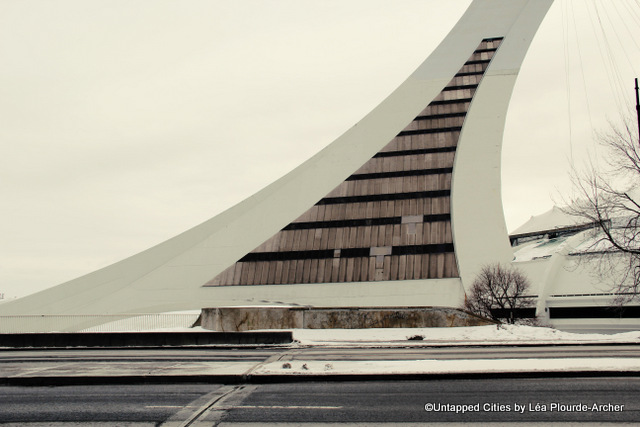
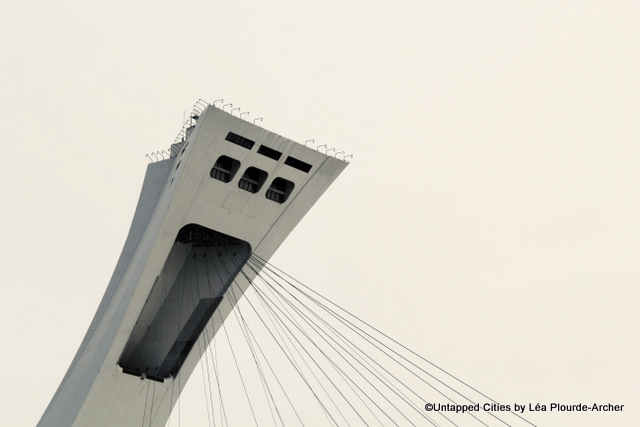
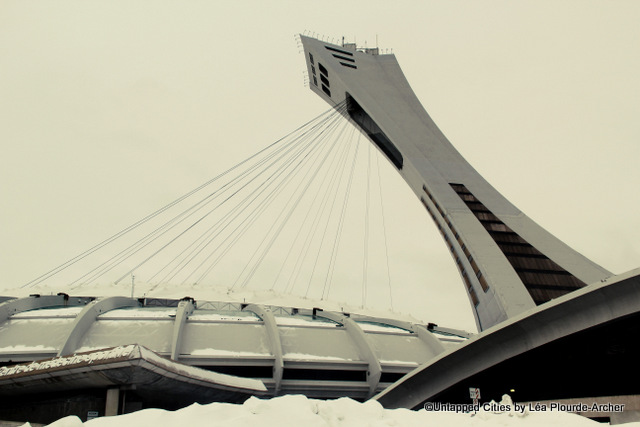
The Olympic Village
The idea of having an Olympic Village during the Games initially came from the founder of Modern Olympics himself, Pierre de Coubertin. He realized that it would be less costly for the hosting cities to build structures that could eventually be sold as housing, instead of putting all the athletes and their entourages into hotel rooms. It also helped create a sense of sharing and community, an idea not uncommon with one of the actual purposes of the Games themselves: to bring all nations together in peace for a brief period of friendly competition.
In 1976, 11,000 athletes stayed in the two pyramids of Montreal’s Olympic Village for the duration of the games. Located less than 1 mile away from the stadium, the housing complex was also designed and built under the supervision of Roger Taillibert.
After the Games were over, the hundreds of rooms were turned into rental apartments and are still quite coveted today.
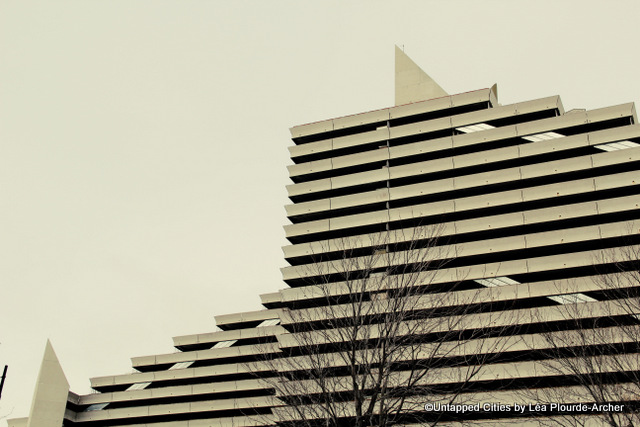
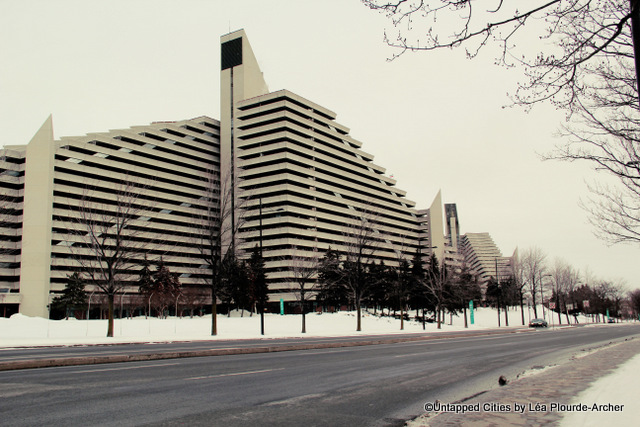
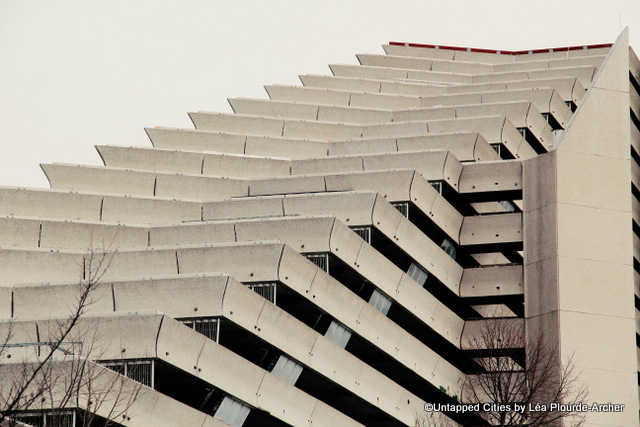
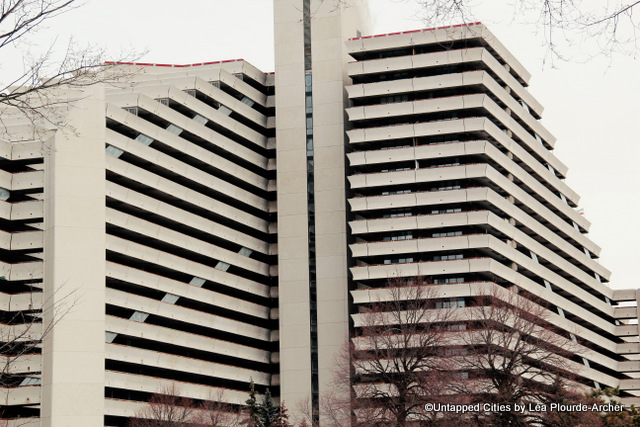
When the Eiffel tower was first erected for the 1889 World Fair in Paris, people hated it and wanted it taken down. Nowadays, Paris wouldn’t be Paris without the beautiful iron structure standing proudly in front of the Seine.
In a way, the Olympic Stadium is Montreal’s Eiffel tower, a quirky, downright strange element of architecture which most people have grown to love. Without it, Montreal just wouldn’t be the same.
This is the second part in a series about The Quirky Buildings of Montreal. Get in touch with the author @ModStoryteller and read her blog.





